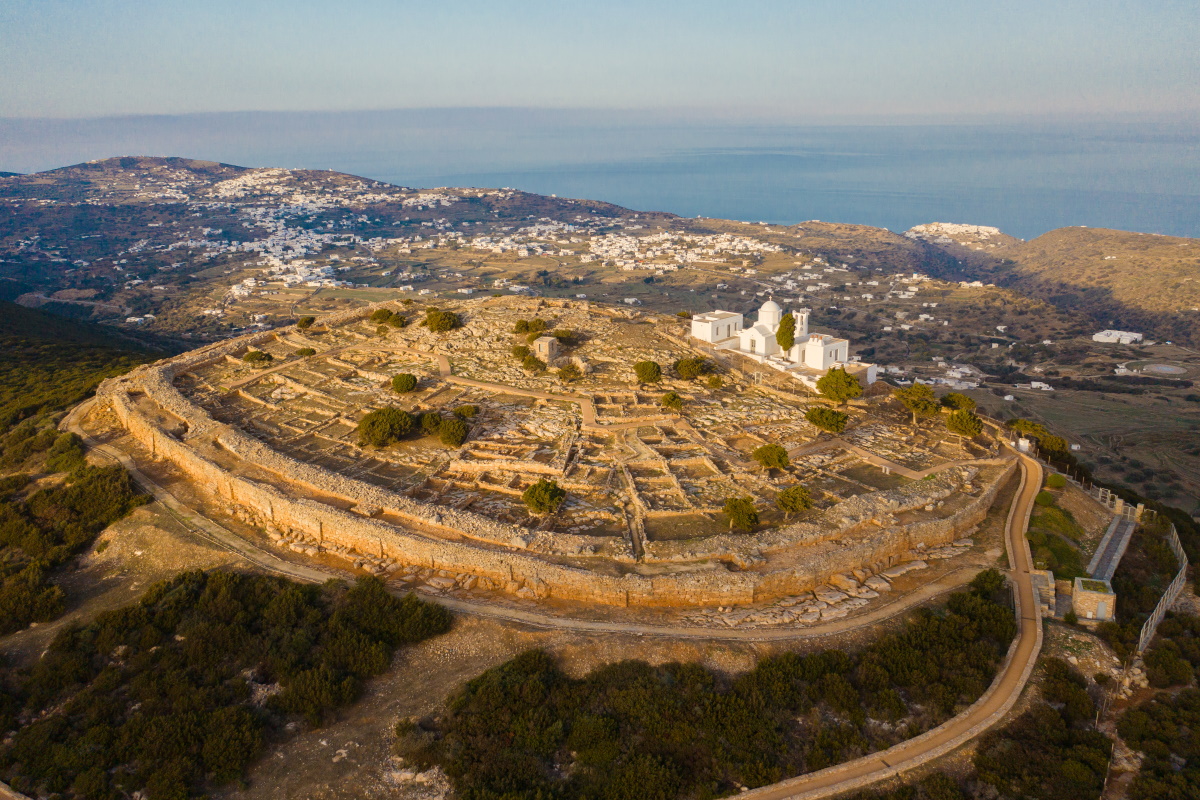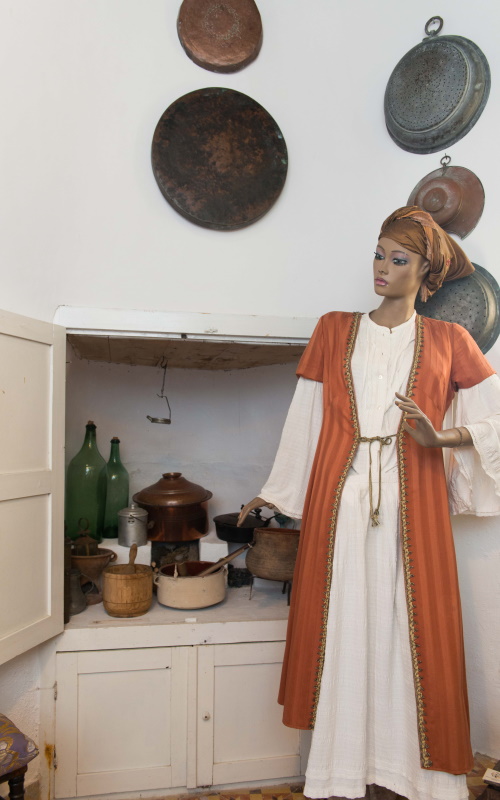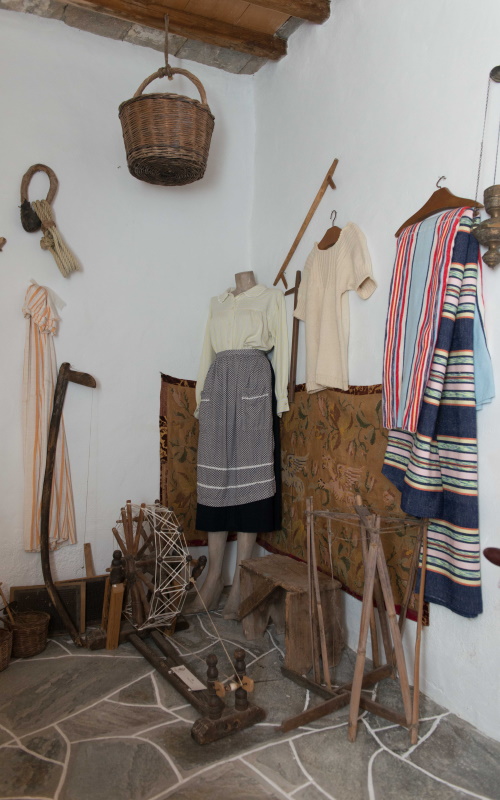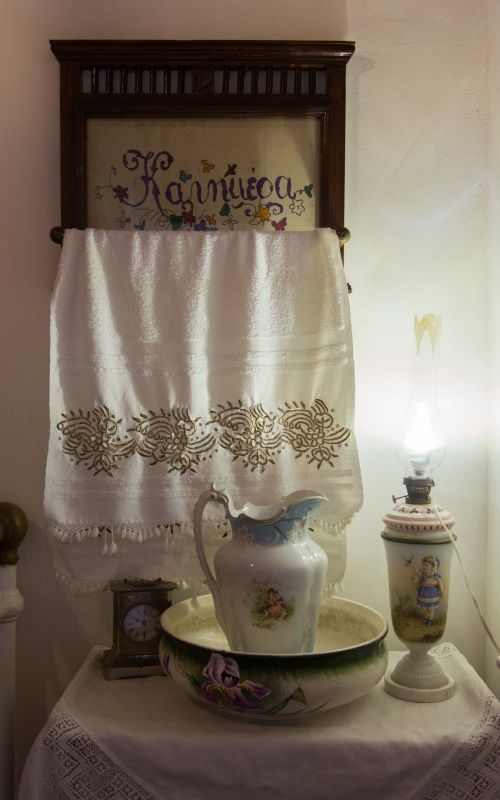History
"Merope", "Akis" "Sifanos", "Sifanto", "Astrogonio" are a few of the names attributed to the island of Sifnos during its long history.
It is thought that the name ‘Sifnos’ may come from Sifnos, son of the hero Sounio of Attica and the first settler of the island, or, according to another version, from the adjective ‘sifnos’ which means empty or hollow, referencing the existence of numerous underground shafts, the result of intense mining activity.
From the graves and foundations of village settlements discovered by archaeologist Christos Tsountas mainly in coastal locations of the island, as well as the latest archaeological research data, it appears that the first settlement of the island took place in at least the third millennium BC. The first inhabitants are thought to be the Pelasgians, and later Kares, Leleges and Phoenicians. According to mythology, these inhabitants were expelled by King Minos, who installed his sons as rulers in the Cyclades.
Archaeological findings indicate that the island flourished and became a center of the Cycladic civilization in the 3rd millennium BC, and it is thought that after the Trojan War, the Ionians led by Alkinora settled in Sifnos. With the arrival of new settlers began a new era, which according to Herodotus saw the founding of the ‘asty’ (city) on the east side of the island, today the village settlement of Kastro.
The island was one of the richest places in the ancient world, due to its gold and silver mines, and its development of the ceramic arts. The second oldest silver mine in the world was already in operation here in the third millennium B C! This wealth is confirmed by research studies and excavations, as well as from coinage minted in about 600 BC. The Sifnians were the first to mint gold coins and first to engrave both sides of the coins. More evidence of the island’s prosperity during this period is the rebuilding of the famous ‘Treasury of Sifnos’ at the sanctuary of Delphi in 525 BC, a building of the Ionic order with rich sculptural decoration of enormous aesthetic and artistic worth. It was the first all-marble building of mainland Greece. Its facade was adorned by two female statues, similar to the caryatids of the Parthenon, although this was built 100 years before the Parthenon! At the same time, in Asti, one of three cities then established on the island, an ‘agora’ (public meeting place) and a Prytaneum (Greek: Prytaneion) were built from Parian marble.
During the Persian Wars, Sifnos took part in the naval battle of Salamis with a ‘pentikontoro’ (50 oared-ship), and later became a member of the First and Second Athenian League. The island's name was inscribed after the end of the Persian wars together with names of the other cities that took part, on the ‘Plataean Tripod’ (originally held in Delphi, later removed to Constantinople (modern-day Istanbul, where it can be seen today).
Information about Sifnos in the Byzantine period is extremely limited. In the early Byzantine period, Sifnos belonged administratively to the province of Achaia in Eastern Illyricum and participated in the small Cyclades fleet. Its commercial importance grew during the middle Byzantine period. Furthermore, during the period of the Iconoclastic Controversy that raged within the Byzantine Empire for more than 100 years, many intellectuals and clerics found refuge in Sifnos, contributing to its spiritual revival.
After the Crusade of 1204, Sifnos joined the Duchy of Naxos, founded in 1207 by Marco Sanudo. In 1269 it was occupied again by the Byzantines, and in 1307 came under the control of Giannoulis Da Corugna, who declared himself independent ruler. Da Coruna fortified Kastro to withstand the Dukes of Naxos who laid claim to the island. In 1464 Sifnos passed into the hands of the Gozzadini family, where it remained until 1566, when the Turks conquered the Cyclades and the latter conceded administration to Joseph Nasi. However, the Gozzadini remained on the island until 1617, though subject to the rule of the Sultan they retained a certain shadow jurisdiction. (The surname Gozzadini is still found on the island today).
With the favorable treatment of the ruling Sultans in the following years, the island saw substantial economic, spiritual and intellectual development.
The economy of the island was based on agriculture, livestock rearing and trade, and was of significant proportions as evidenced by the presence of the consulates of France, England and Holland on the island.
In 1687, the famous School of the Holy Sepulchre (Panagios Tafos), also known as ‘Paideftirion of the Archipelago’ was founded in Sifnos, where the great teachers such as Emmanuel Trochani and Nikolaos Chrysogelos taught. 300 students from Sifnos and other parts of Greece enrolled at the School to study under a teacher for a period of five years. More than fifty Sifnians later went on to have important careers in the ecclesiastical hierarchy, occupying prominent seats. The school saw the first uses of the peer method of teaching used by Nikos Chrysogelos, who later became the first Minister of Education and established the first elementary schools. Three Sifnian Patriarchs, 47 Metropolitan bishops, as well as many writers, teachers and doctors of the time were graduates of the school.
Simultaneously in Sifnos conditions were established that favoured the development of community institutions of local self-government, the main governing body being the General Assembly of the Commons.
Sifnos participated in the Greek War of Independence 1821, with a regiment organised by Nicholas Chrysogelos, which was mainly active in the Peloponnese.
After the Revolution, Sifnos continued to excel in all fields, especially in literature, producing great scientists, writers and scholars such as Ioannis Gryparis, Nikolaos Dekavallas, Konstantinos Dialeismas, Iakovos Dragatsis, Aristos Kambanis, Apostolos Makrakis, Aristomenis Provelengios, Theodosis Sperantsas, Antonis Zilimon, Georgios Maridakis, and others.
The island fell under Italian occupation in the period from 1941 to 1944.
During the 19th and early 20th centuries, many Sifnians served as Members of Parliament, including Aristomenis Provelengios, Antonis Prezanis, the doctor, Georgios Koulouris and others, while Konstantinos Provelengios served as Minister of Justice, Finance, and later of the Interior.












